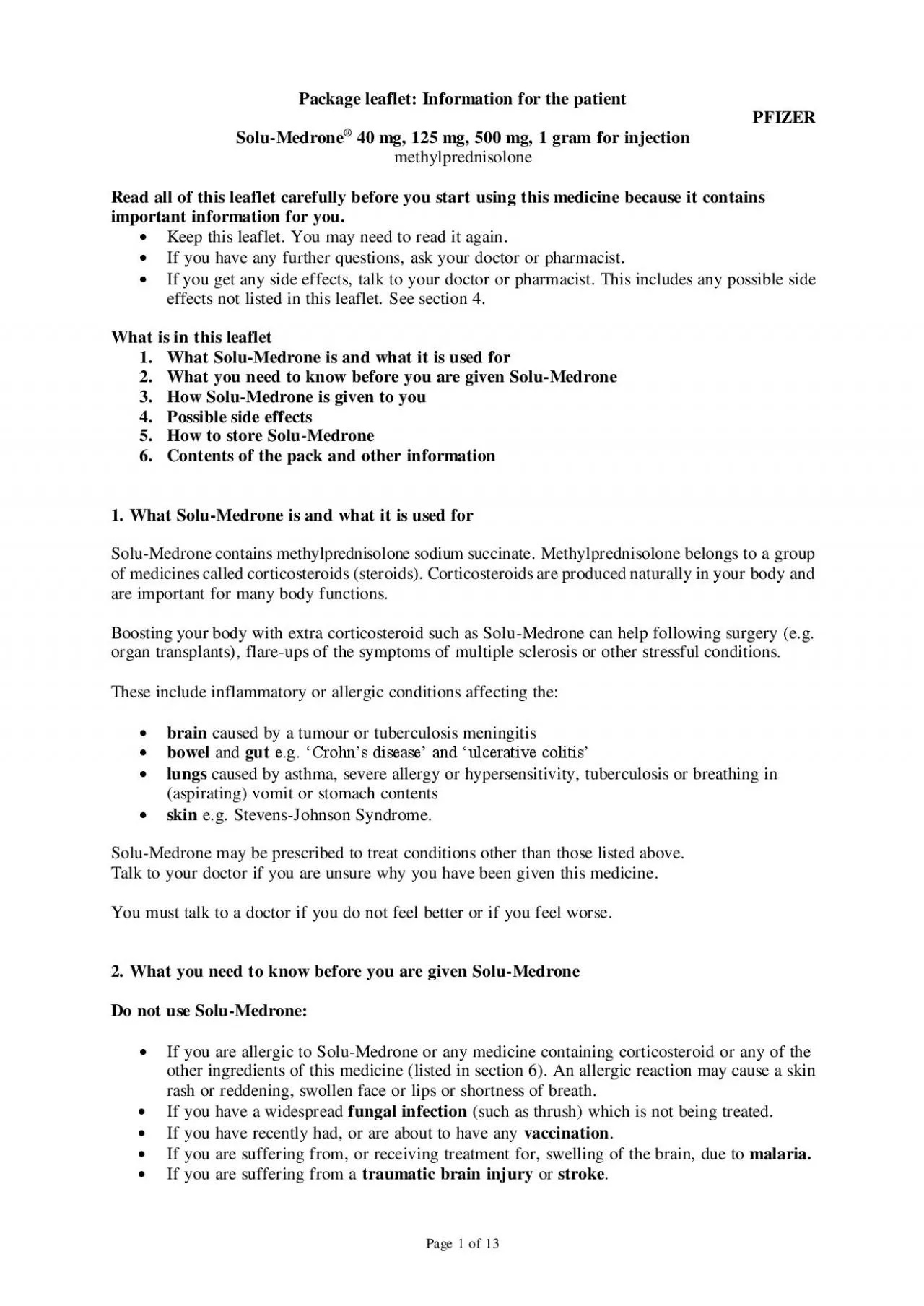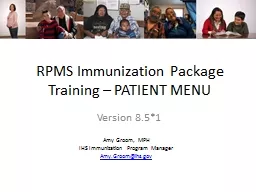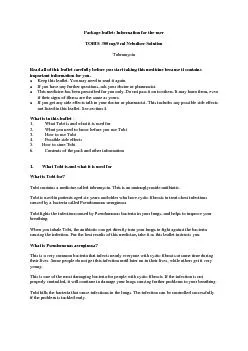PDF-Package leaflet Information for the patient
Author : carla | Published Date : 2021-09-03
Page 1of 12PFIZERSoluMedrone40mg 125mg 500mg 1 gramfor injectionmethylprednisolone Read all of this leaflet carefully before you start usingthis medicinebecause
Presentation Embed Code
Download Presentation
Download Presentation The PPT/PDF document "Package leaflet Information for the pati..." is the property of its rightful owner. Permission is granted to download and print the materials on this website for personal, non-commercial use only, and to display it on your personal computer provided you do not modify the materials and that you retain all copyright notices contained in the materials. By downloading content from our website, you accept the terms of this agreement.
Package leaflet Information for the patient: Transcript
Download Rules Of Document
"Package leaflet Information for the patient"The content belongs to its owner. You may download and print it for personal use, without modification, and keep all copyright notices. By downloading, you agree to these terms.
Related Documents














